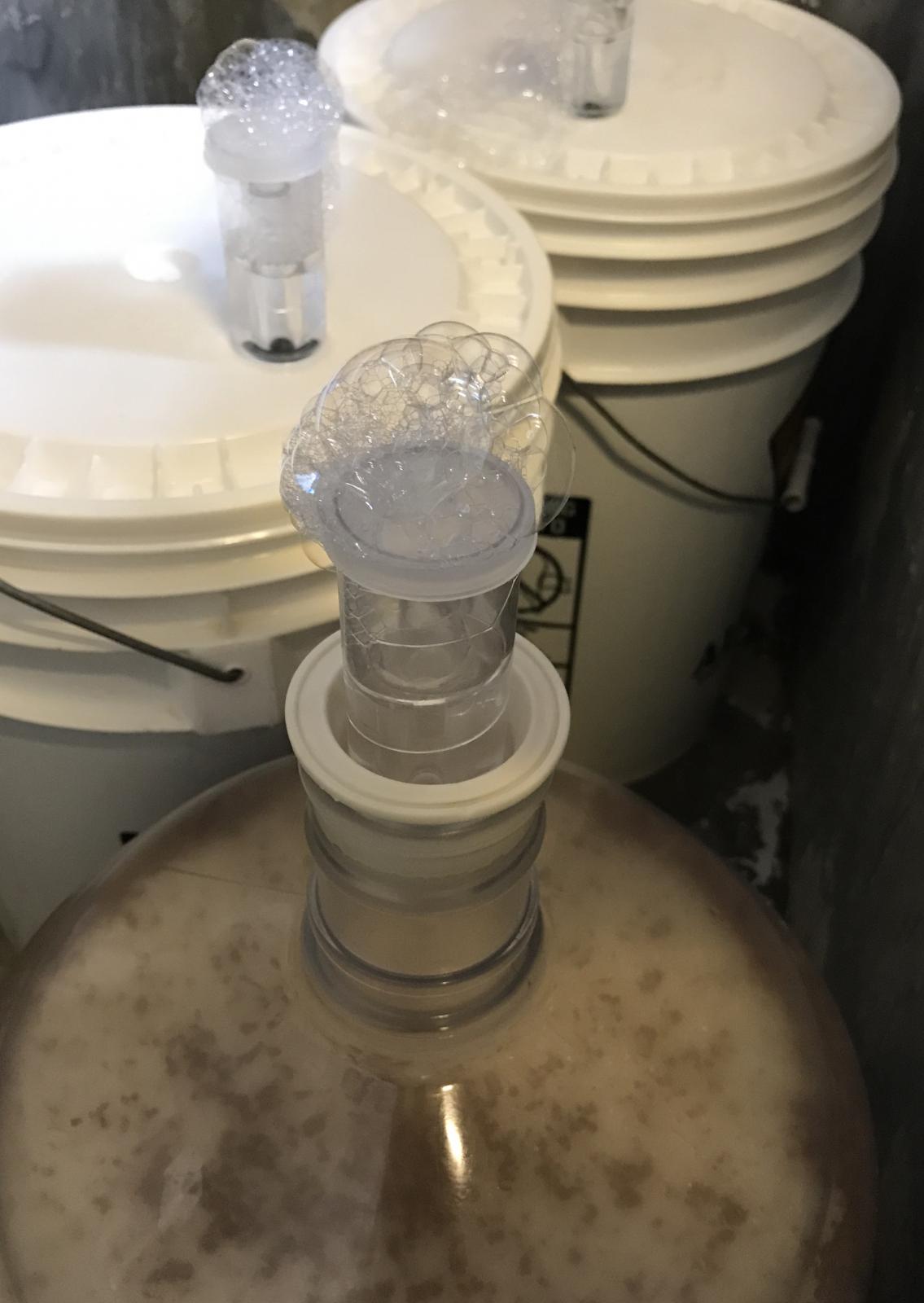- Joined
- Dec 19, 2015
- Messages
- 604
- Reaction score
- 185
Brewing up a classic English Brown ale
Did not have a couple things:
Didn't have 60 L Caramel malt subbed Carahell ( light caramel)
Didn't have Caramel Vienna subbed Biscuit 50 ebc
Victory subbed subbed more Biscuit Ebc
Didn't have chocolate malt subbed Carafa
and last addition hops were meant to be willamette, i'm using EKG
2 liter yeast starter made from S-04
Thoughts?
Recipe Specifications
--------------------------
Boil Size: 19.77 gal
Post Boil Volume: 19.27 gal
Batch Size (fermenter): 18.00 gal
Bottling Volume: 17.53 gal
Estimated OG: 1.053 SG
Estimated Color: 16.9 SRM
Estimated IBU: 29.6 IBUs
Brewhouse Efficiency: 72.00 %
Est Mash Efficiency: 74.0 %
Boil Time: 60 Minutes
Ingredients:
------------
Amt Name Type # %/IBU
2.00 tbsp PH 5.2 Stabilizer (Mash 60.0 mins) Water Agent 1 -
30 lbs CHÂTEAU PALE ALE (4.3 SRM) Grain 2 83.0 %
3 lbs CHÂTEAU BISCUIT® (25.4 SRM) Grain 3 8.3 %
2 lbs Carahell (Weyermann) (13.0 SRM) Grain 4 5.4 %
1 lbs 3.2 oz Carafa I (337.0 SRM) Grain 5 3.3 %
2.94 oz Northern Brewer [8.50 %] - Boil 60.0 min Hop 6 25.7 IBUs
2.00 Items Whirlfloc Tablet (Boil 15.0 mins) Fining 7 -
2.94 oz Willamette [5.50 %] - Boil 5.0 min Hop 8 3.3 IBUs
2.94 oz (EKG) [5.00 %] - Boil Hop 9 0.7 IBUs
2.0 pkg 2 L starter - SafAle English Ale (DCL/Fermentis #S-04) Yeast 10 -
Did not have a couple things:
Didn't have 60 L Caramel malt subbed Carahell ( light caramel)
Didn't have Caramel Vienna subbed Biscuit 50 ebc
Victory subbed subbed more Biscuit Ebc
Didn't have chocolate malt subbed Carafa
and last addition hops were meant to be willamette, i'm using EKG
2 liter yeast starter made from S-04
Thoughts?
Recipe Specifications
--------------------------
Boil Size: 19.77 gal
Post Boil Volume: 19.27 gal
Batch Size (fermenter): 18.00 gal
Bottling Volume: 17.53 gal
Estimated OG: 1.053 SG
Estimated Color: 16.9 SRM
Estimated IBU: 29.6 IBUs
Brewhouse Efficiency: 72.00 %
Est Mash Efficiency: 74.0 %
Boil Time: 60 Minutes
Ingredients:
------------
Amt Name Type # %/IBU
2.00 tbsp PH 5.2 Stabilizer (Mash 60.0 mins) Water Agent 1 -
30 lbs CHÂTEAU PALE ALE (4.3 SRM) Grain 2 83.0 %
3 lbs CHÂTEAU BISCUIT® (25.4 SRM) Grain 3 8.3 %
2 lbs Carahell (Weyermann) (13.0 SRM) Grain 4 5.4 %
1 lbs 3.2 oz Carafa I (337.0 SRM) Grain 5 3.3 %
2.94 oz Northern Brewer [8.50 %] - Boil 60.0 min Hop 6 25.7 IBUs
2.00 Items Whirlfloc Tablet (Boil 15.0 mins) Fining 7 -
2.94 oz Willamette [5.50 %] - Boil 5.0 min Hop 8 3.3 IBUs
2.94 oz (EKG) [5.00 %] - Boil Hop 9 0.7 IBUs
2.0 pkg 2 L starter - SafAle English Ale (DCL/Fermentis #S-04) Yeast 10 -





